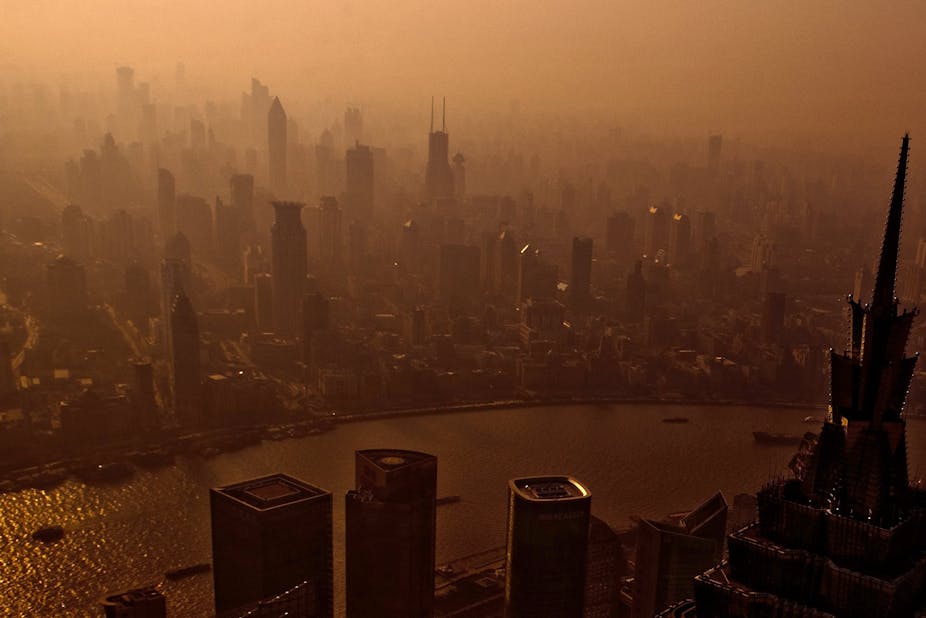While city planners have been encouraged to plant trees and gardens to green the city for the health of its inhabitants, recent research has found that the same trees can damage certain buildings.
Our research revealed that chemicals produced by certain species of plants and trees react with common air pollutants to create damaging chemicals that corrode building materials such as stone, concrete, and steel. Especially at risk are heritage buildings which are built of limestone or sandstone.
Published in the Science of the Total Environment journal, our study examined the role of “green infrastructure” such as trees and vegetation in towns and cities, something that local authorities have been encouraged to invest in. Urban green areas can reduce greenhouse gases, cut down exposure to pollution for city dwellers, especially those spending time in heavily polluted areas such as cyclists, and provide a mental health boost.
Interactions between the chemicals released by plants and building materials have not been studied, so we made our focus. The damage is caused by ground level ozone, formed when the volatile organic compounds given off into the air by plants are broken down in sunlight and react with the common pollutant nitrogen dioxide.
Using mathematical simulations, we investigated the effect of green vegetation on the integrity of limestone and steel structures during different seasons. Some species commonly found in cities such as sycamore maple and Douglas fir produce these organic compounds. Urban areas with many of these and similarly active species will therefore have higher concentrations of ground level ozone during summers, and so a relatively larger rate of lime stone deterioration.

You name it, we’ll corrode it
The effect of green infrastructure on building materials is not always identical. Each building material has differing resistance or vulnerability to a particular pollutant. For example, limestone, from which buildings such as Houses of Parliament or St Paul’s Cathedral, and Westminster Abbey are constructed, is strongly damaged by increased levels of ground level ozone.
Other building materials such as zinc, copper and carbon steel are also affected, both by the levels of air pollutants and the local climatic conditions. Some of the corrosive gases, such as sulphur dioxide, ozone and nitrogen oxides, are particularly aggressive in attacking building materials.
Sulphur dioxide, the active ingredient in acid rain, is no longer a major issue in most of the developed world. But this is only after decades of efforts to reduce sulphur emissions from power stations and factories, and move to low-sulphur fuels.
Ozone and nitrogen oxides still remain a challenge. Ground level ozone in the northern hemisphere has almost doubled since the 19th century, with up to two-thirds of these emissions due to burning fossil fuels.
It depends where you live
In Asia and Latin America nitrogen oxides are increasing due to less stringent environmental regulations. Here, transport emissions account for a large proportion of nitrogen oxides which then contribute to ozone formation.
In contrast, in Europe levels of roadside nitrogen oxides have significantly decreased due to tighter regulations and improving vehicle technology. Even so, the rate of decrease is slower than anticipated. There has been no similar decrease in nitrogen dioxide levels, despite reductions in nitrogen oxides.
Consequently high levels of nitrogen dioxide that breach EU limits are found in many urban areas throughout Europe, with serious implications for building integrity, and for public health. Nitrogen dioxide has been linked to adverse respiratory effects, especially in people with asthma.
To date, only the positive effects of “greening” the city have been considered, without realising that the vegetation planted could in fact be adding to the problem. The effects that more plants and trees can have on relative humidity and wind in a local area can also act as a catalyst for further deterioration of buildings.
Planners may want to realise that planting trees for the benefit of people can have unintended consequences on bridges, buildings and other key infrastructure. But green areas are important, integral parts of towns and cities – it will not do to simply cut them out of the equation. Instead those designing city parks and gardens and other greening improvements should carefully select the species that will produce the least organic compounds, and so limit the damage to buildings around them.

